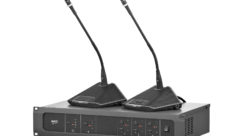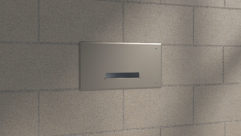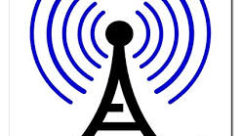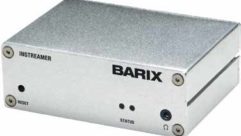In this chapter, we’ll focus on the pin-1 problem and on ways to test for it and correct it.
The pin-1 problem
The pin-1 problem refers to a means of EMI pickup in audio equipment related to connections to pin 1, the ground pin of an XLR-type connector (Muncy, 1995). Pin 1 of an XLR-type connector is the pin used for the cable shield connection. In general, the pin-1 problem refers to the connection of shields to audio equipment and how connector contact pin 1 is internally grounded. In the case of 1/4-inch jacks, this would correspond to the sleeve of the jack.
The pin-1 problem manifest itself as noise that is induced into the circuitry of audio and video equipment and then appears on the equipment’s outputs. In brief, the problem occurs when the circuit grounds are shared with the input and output connector shield grounds. When this occurs, common impedance coupling causes the electrical noise picked up in the shield to be transferred to the electronic circuits. One way of visualizing this is that the grounds used for shields should be thought of as freshwater pipes. Keeping these two apart has obvious advantages.
An interesting aspect of the pin-1 problem is that a piece of equipment that measures flawlessly on the test bench might, when installed on site, be quite noisy. Once all of the shields are connected from the many microphone lines and line inputs and line outputs of, say, an audio console, the pin-1 problem then manifests itself. Therefore, noise specifications of most audio equipment are quite meaningless. The pin-1 problem is common in much of today’s audio equipment in everything from large mixing consoles to 1/3-octave equalizers.
Although the pin-1 problem is entirely preventable by good electronic design, it is prevalent. Unfortunately, as system designers we often use certain pieces of equipment that might exhibit the pin-1 problem, or we might not be aware of which equipment suffers from pin-1 problems. This becomes a major source of EMI in many audio systems.
One way to minimize the pin-1 problem is not to connect any of the shields to pin 1 at the audio equipment but rather to ground the shields to some intermediary terminal strip near the audio equipment. This approach applies to twisted shield pair cable and requires a fully engineered approach to the design and documentation.
In short, the pin-1 problem is important to audio-system designers and builders. This element of grounding can be addressed and results in the largest overall improvement in system noise.
The hummer
Fortunately, there is a way to test for the pin-1 problem. The hummer test was presented by John Windt of Culver City, CA, at the fall AES conference in 1994 in San Francisco (Windt, 1995). The hummer test determines whether a piece of audio equipment9s sensitive to noise being injected on the pin 1 or shield termination points of the audio inputs and outputs. The way the test is performed is to take an electrical signal, in this case a 60Hz signal, and inject it into the ground system via various combinations of input and output pin-1s and also the chassis. While this is being done, the output of the equipment is being monitored with suitable equipment. Any change in the noise level on the output of the equipment will be a result solely of the noise being injected.
Many shield terminations are on some pieces of equipment, particularly consoles. Therefore, a large number of potential paths should be tested—for example, pin 1 of an input and pin 1 of each of the outputs of the console, pin 1 of the inputs and the chassis of the console, pin 1 of an input and pin 1 of other inputs to the console, pin 1 of an output and pin 1 of another output of a console. Each of these is a potential path of noise. Depending on how the grounding has been implemented in the console, these will have varying effects on the overall output noise on the console.
Monitoring the output noise is obviously a critical element of this test. The simplest form of test equipment would be a voltmeter or a good loudspeaker monitor system with high gain, allowing one to hear the noise floor of the equipment.
Figure 27, which was taken from Windt’s paper in the JAES, shows the circuit diagram for the hummer (Windt, 1995). The hummer consists simply of a 110Vac to a 6V, 12V, 18V or 24V transformer and a current-limiting resister. The output of the transformer is terminated in alligator clips, which allows it to be terminated as required. The author has suggested a number of adapters that will make using the hummer simple and effective, and these are shown in Figure 28, which was in the same article.
The fact that various equipment can function differently with regard to the noise it generates depending on its internal wiring and whether it suffers from the pin-1 problem may explain why what seemed to work on one project with regard to grounding does not work on another.
It is important to note on possible solution to a piece of equipment that has the pin-1 problem: Simply do not connect anything to pin 1, and ground the incoming shields separately via a terminal block to some other technical ground point in the system , such as the ground block in the rack. However, in the case of microphones, it must be noted that the phantom power returns on pin 1. Because the shield is connected not directly to the console but rather to an interim ground point, the phantom power returns through the ground system. This is illustrated in Figure 29. On at least one of my installations, this situation caused microphone oscillation.
Altho9ugh it would be nice to be able to focus on which audio and video components you will use and on installing this equipment for its happy new owner, without proper grounding and shielding, these systems will not perform as well as they could. Careful attention to the design of the grounding and shielding system allows you to get the best system performance in real-world conditions without incurring unreasonable costs.









